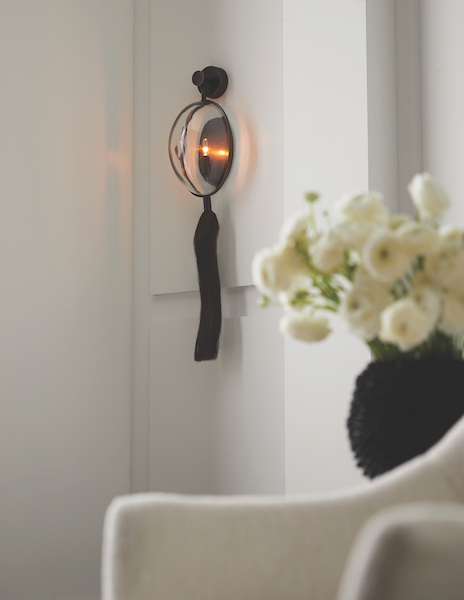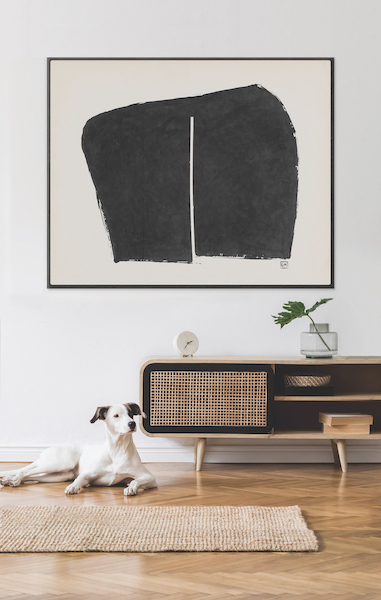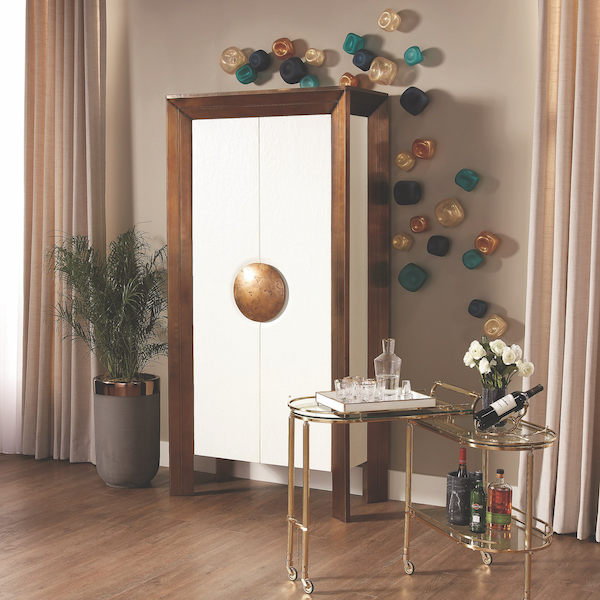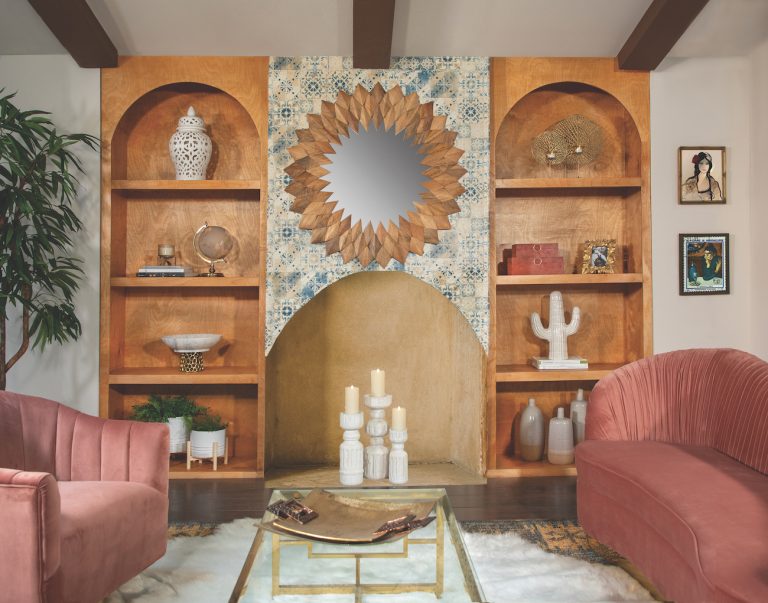Decorating the walls of your space can be a lot of work. Today's interior decoration and lighting manufacturers offer a wide range of decorative wall objects that vary in size, material, and texture, and deciding on the placement of these pieces is often a balancing act.
“Walls are blank canvases that seek the dimension and texture that our decorative wall décor, sconces and mirrors provide,” said Barb Fuller, Vice President of Marketing for Interiors. “Flat wall art can be a beautiful addition to a space, but choosing something with texture and shape adds texture and soul to a room's décor.”
 More modest wall sconces are perfect for hanging in groups, while pieces like Artteriors' Aramis sconce can stand alone.
More modest wall sconces are perfect for hanging in groups, while pieces like Artteriors' Aramis sconce can stand alone.
Artteriors offers a full range of wall decor in a variety of aesthetics, from mirrors to sconces to decorative wall hangings. When it comes to materials, Fuller says Artteriors is seeing a growing interest in natural materials. Rattan and wood, which have long been popular in the company's furniture category, are also appearing on the walls.
“These products resonate from a textural standpoint and are more visually appealing than standard flat wall art pieces,” she says. “With everyone still at home and unable to travel, we are looking for decorations to satisfy that nostalgic feeling of being outdoors and in nature. With natural wood finishes or botanical style wall decor, you can bring the outdoors to life. You can bring in the atmosphere.”
But don't discount traditional framed wall art's ability to add the texture and visual interest your clients or customers are looking for, says Gail Harrismowich, art director at Celadon Art.
“Visual texture is our perception of what texture feels like in real life,” she says. “This is based on memories of similar tactile experiences we may have had. Representing texture through framed artwork can be achieved in a variety of ways.” This includes adding three-dimensional objects to the print, and using hand-applied gold plating to manipulate light and shadow to add texture.
 Wall art textures, like Celadon Art's Simplex IV, can add visual weight and balance to any design.
Wall art textures, like Celadon Art's Simplex IV, can add visual weight and balance to any design.
Layering is another key element to incorporating framed art to achieve a three-dimensional look, both within the artwork itself and in how the art is styled with other decor.
“Visible layers in framed artwork are also a way to bring continuity to a space,” says Harismowicz. “Incorporating different textures within a monochromatic color scheme can add contrast and create a sense of harmony.” You can also incorporate different types of wall decorations into spaces that share a common theme. also says it can add visual interest while maintaining a cohesive look.
Sagebrook Home offers a variety of wall decor including mirrors, wall art, clocks, wall flowers, wall hangings, and wall storage. The company's wall shelves serve multiple purposes and add visual appeal to your wall decor, as well as spatial benefits.
“Using wall storage or shelving can create more space in a room,” says Justin Kirchan, CEO of Sagebrook. “This can be a great tip for a small room that is a multipurpose space. Along with an extended wall that includes a minimal break to help break up a larger room.” According to Karchan, his client typically sticks to a monochromatic palette with gold accents, styling sagebrook wall shelves with vases and small decorative accents.
Mirrors also affect the spatial perception of a room.
“Mirrors can be used in any space to make the room feel larger,” says Karchan. “A mirror is like an ever-changing moving image in a room, and when framed like this it draws attention.”
At Global Views, the company's wall décor products include wall art, sculptural objects, shelves, candle sconces, and more, especially products made from materials such as glass, metal, wood, and agate . Some of the company's framed wall decor also includes visual textural elements, such as his Kantha Abstract Design wall art made from recycled saris. Global Views is constantly challenging the creativity of its factory and team itself to come up with new and different materials to use to create alternative wall decorations, says company owner David Gebhart .
 Global Views wall locks come in multiple sizes and colors and can be configured in any arrangement to suit your specific space.
Global Views wall locks come in multiple sizes and colors and can be configured in any arrangement to suit your specific space.
The versatility of these unique pieces means that many can be hung vertically or horizontally, and many are available in multiple sizes to fit any application.
“You can install these pieces in any setting: in your living room, dining room, above your bed,” Gebhardt says. “They have a huge impact on the environment of the room in which they are placed. But if for some reason you get tired of these in the first round, you can always pick them up and move them easily to another part of the house, and in a different environment They will react very differently.”
According to Artteriors' Fuller, sconces also play a role in the design above the chair rail.
“Sconces are a supporting role in the overall design story of a space,” she says. “When added at the right time, whether it's a soft, intimate light in your powder room or placed on a nightstand in your bedroom, it completes your lighting ensemble and takes the beauty of your space to another level. Light sources are meant to overlap, but that doesn't mean they can't stand out.'' However, in spaces like hallways where multiple fixtures may be used, they should not overwhelm the space. She suggests choosing a more modest wall sconce.
fill the wall
When the COVID-19 pandemic hit the United States last March and April, Global Views made several products for its website, including a new set of cross-hatched glass wall discs. We shot a video of the three-dimensional wall decorations and showed them from all angles. composition. Many of the videos include narration and an overview of installation instructions, attempting to answer any questions that may arise or discourage customers from purchasing the product without seeing it in person. This approach worked. The wall disc sold out within months of the video's release.
Gebhart says the same technique can be applied to retail environments where wall space may be limited. Rather than cramming a wall with all the products available, he suggests creating a kind of printed catalog that showcases samples and shows customers what's possible. He used cross-hatched disks as an example. His website at Global Views has 24 sets of his discs on display on the wall, which would be too many for the average retail space.
“If you simply put one set of three on the wall and reproduce an image showing 24 sets, you can help customers understand that there is a lot you can do,” he says. “Especially if your project involves an interior designer or if it's a retail environment, you need a team of highly creative visual merchandisers who can explain to customers how they can customize their home.” ”
Fuller agrees, pointing out that retailers need to stay on top of customer trends, understand what the typical designer and retail customer is looking for, and act from there. .
“Keeping a similar aesthetic helps shoppers focus on what resonates with their design,” she says. “Grouping products by theme or material can define wall space and give visual clues to designers and customers. We often introduce new products so customers can easily see what's new. Calling out also helps.”
Because the options for this type of wall decoration are seemingly endless, Gebhardt emphasized the importance of working with a professional to arrange it in a way that makes sense.
“It's always kind of an artistic endeavor,” he says. “It's a bit like arranging flowers in different ways. Some people have a knack for arranging flowers, but others have a knack for helping with the installations, and they can help with these pieces. We need to find people who can create something truly artistically beautiful.”

